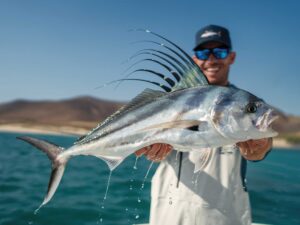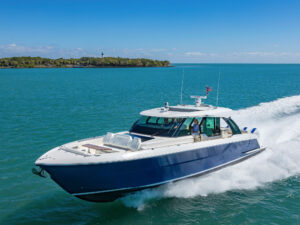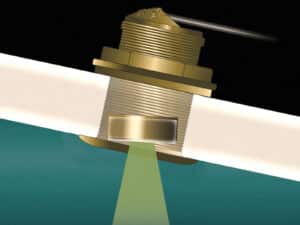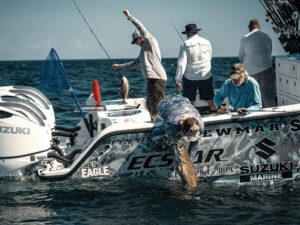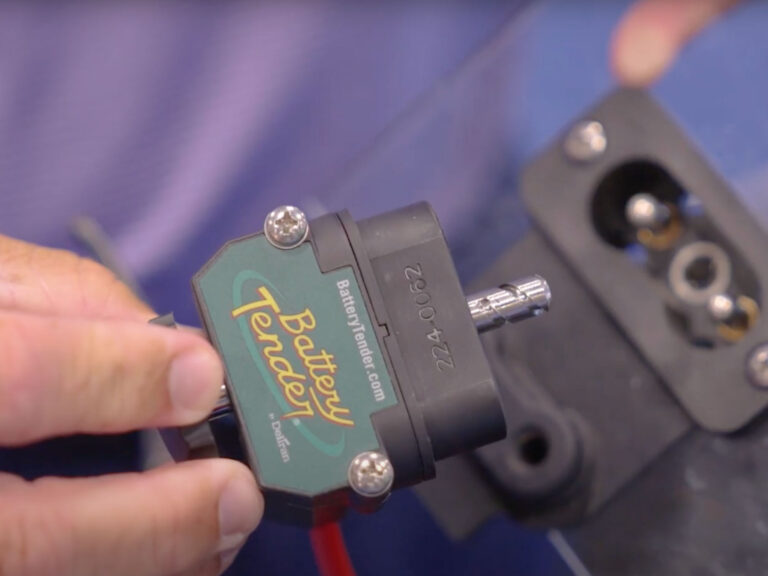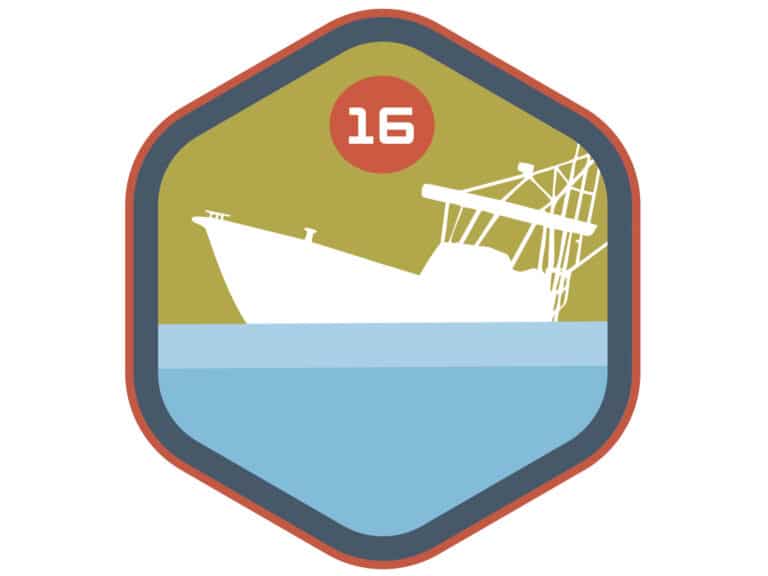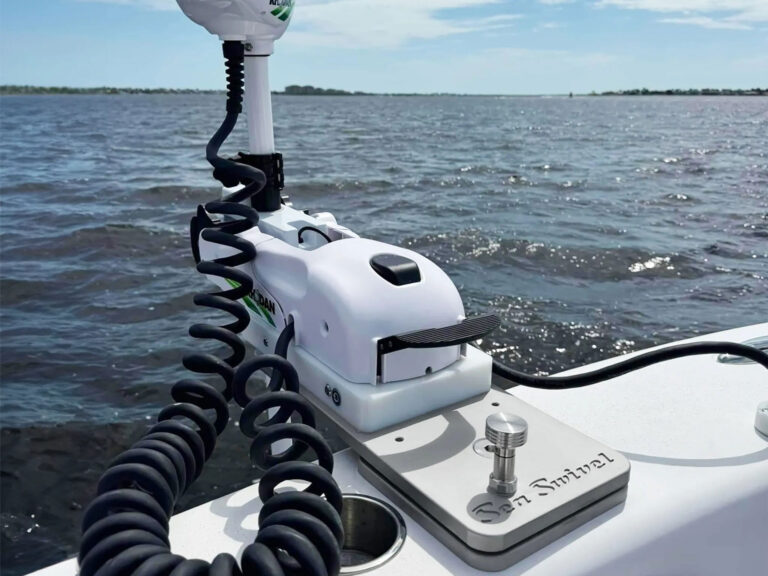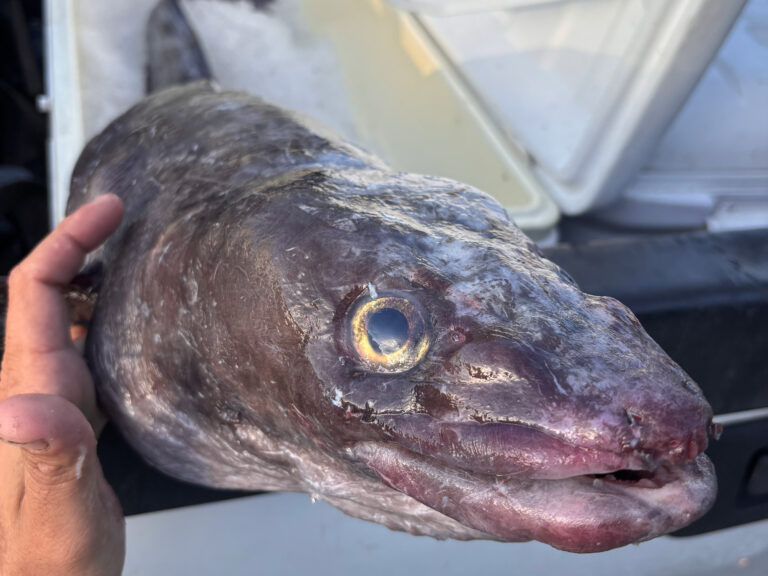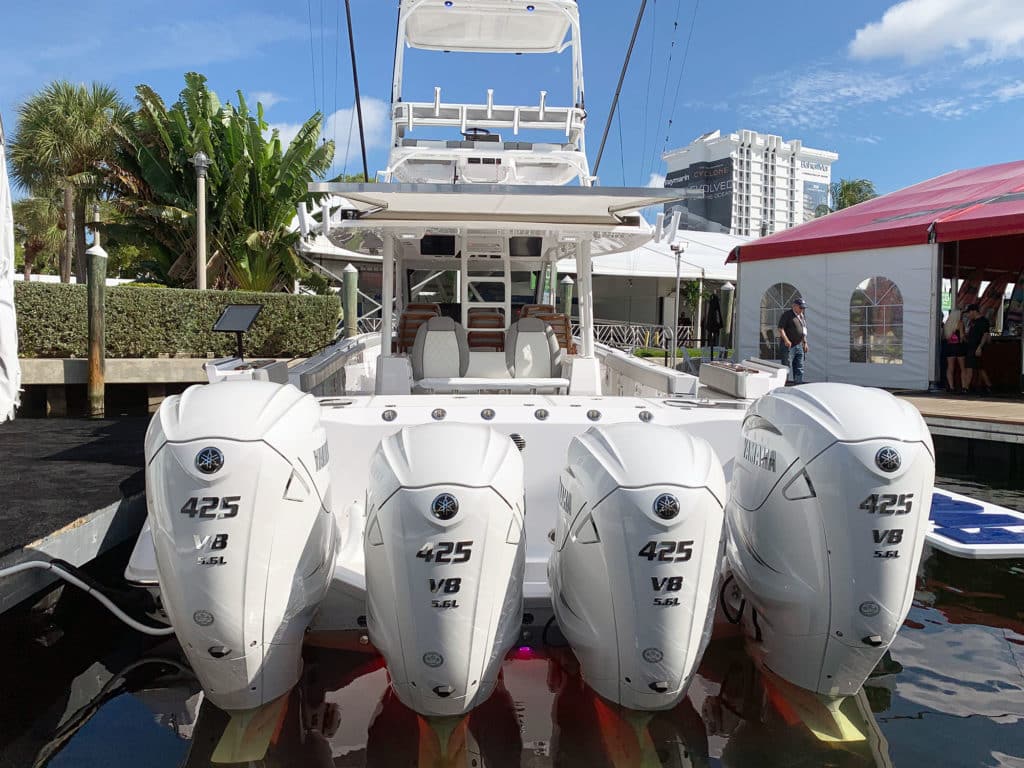
Remember the good old days when a pair of 250-horsepower outboards seemed potent? That’s ancient history, because today everyone wants more power.
Our mate gaffs one last mahi before we pull in the lines and point the bow for home, which is more than 30 miles over the horizon — yet we’ll hit the dock in well under an hour. With four Mercury Verado 300s on the transom, the SeaVee 390Z we’ve been fishing from can boil the water at an outrageous 70-plus miles per hour. Capt. Josh Henderson, of the Liquid Fire Fishing Team, set a cruise closer to 50 mph while I plopped down on a beanbag and grabbed my sunglasses. Darn, I won’t have time for a decent nap.
High Numbers of Outboard Engines
Why the heck do so many of today’s center consoles have three, four, or even five fuel-chugging outboard engines of epic proportions perched atop the transom? Are there not diminishing returns as you stack more engines across the back of the boat? Why are all those boat builders leaving the 1,000-horsepower barrier in their wakes?
Fishermen Want More Outboards on Their Boats
Let’s address that last question first, because it’s the easiest to answer. Builders are simply answering consumer demand. If boaters didn’t want big giant center consoles with gobs of horsepower and multiple motors, they wouldn’t buy them. But they do. Competitive anglers want to gain the edge that speed delivers, and recreational anglers treasure every moment of their limited fishing time. Who wants to spend hours plodding along at 20 knots, when you could be running to the wreck at warp speed?
Bigger Faster Center Console Fishing Boats
We all want to get to the hotspot first, and we all want to do it in comfort. So, we want bigger, faster center consoles. The boat builders are happy to oblige, as are the engine manufacturers. Every time the engines get bigger, the next generation of center console gets bigger, but then those boats are a hair slower again. And that’s the catalyst for the next bigger, better outboard to hit the market. Added bonus: Those newer bigger engines likely come with digital controls and joysticks, so more potential buyers out there are comfortable with the thought of operating them. It’s not exactly a self-fulfilling prophecy, but the trend has certainly fed on itself for the past decade. Hence, that 30-footer with pair of 250s that once ruled the water is today’s small potatoes.
Outboard Engine Fuel Efficiency
From the efficiency standpoint, just how big of a disaster is this? You tree-hugging types who are as power hungry as the rest of us can stop sweating. Though it may come as a surprise, fewer outboards isn’t always better as far as efficiency goes. While switching from one outboard to two does generally cause a slight dip in economy, going from two to three is commonly an improvement since each individual outboard works a lot less to propel the boat to an equivalent speed.
For example, the Valhalla V-37 is available with both twin F425s and triple F300s. The triple rig hits 35 mph at 3500 rpm, getting 1.3 mpg. But the twin engine rig is doing closer to 25 mph at 3500 rpm, and the engines have to whirl at over 4000 rpm to match the 35-mph mark—at which point efficiency is around 1.1 mpg. Meanwhile the triple rig also enjoys a top-end advantage, hitting 63 mph versus 58.3.
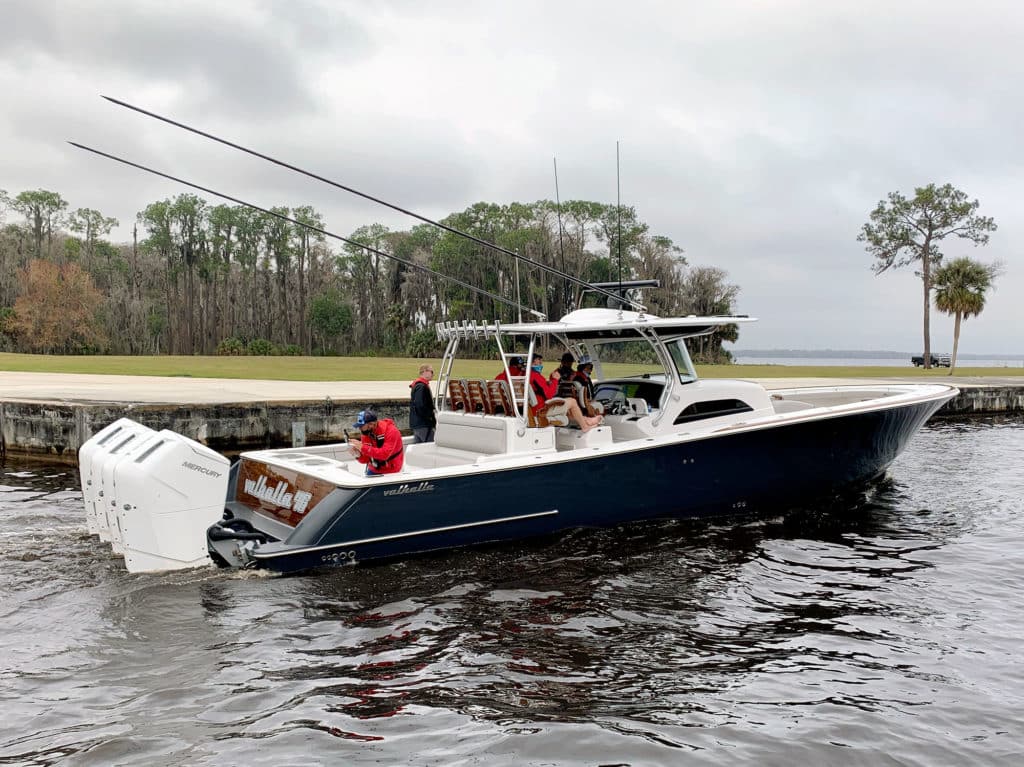
What happens when you jump from trips to quads? Let’s stick with the Valhalla example, but bump it up to the V-46 model. With quad 450R Mercury outboards, this boat gets 0.5 mpg while running at 43.9 mph, spinning 4000 rpm. Top end hits 70.6 mph. In the case of triple 600 Verados, top end dips to 67.4, however, turning 4500 rpm gets you 0.6 mpg and 45.7 mph. That’s more speed with increased efficiency for the triple-engine rig of equivalent horsepower (1,800 horsepower) as opposed to the quads. But then let’s add 600 more horses (2,400 horsepower) and jump to quads of that size. Speed at 4500 rpm bumps up a bit to 48 mph, but efficiency remains at 0.6 mpg, while top end jumps to 73.8 mph. So in this case, triples come out ahead when the total power is equal, but quads come out ahead with larger motors.
Sure, variables like sea conditions, wind, prop choice and many other factors can mess with these numbers. But feel free to look up performance reports on any center console rigged with twin outboard engines vs. trips vs. quads, and you’ll see similar patterns repeated over and over again.
Let’s Be Honest About Outboard Engines
All of that said, can we get real for a second here, people? We could try to convince ourselves that efficiency really matters, but truth be told each and every one of us running a center console to blue water probably isn’t going to choose a rig based on a few tenths of a mpg. These are offshore fishing boats we’re talking about, and none of them are exactly carbon-footprint-friendly. Looking at the big picture we’re just splitting hairs. Still, the bottom line is that more multiple outboards is not necessarily an efficiency disaster in comparison. Initial cost isn’t a huge factor, either. As to buying four 450Rs versus three 600 Verados, the difference is negligible in the grand scheme of things. And if you have the wherewithal to slap down the cash for triple 600s, why not add a fourth and get more mph at top-end?
Outboard Engine Reliability
What can be downright disastrous, however, is outboard engine reliability. Hang four outboards of any brand on the transom of a boat and then start running them far and hard through the ocean, and sooner or later something is going to go wrong with one of them. At least one of them. Sure, you can still get home without a problem, but now you have to pull the boat and suffer through down-time. In that regard, fewer might just be better.
The bottom line? We anglers want bigger boats. (Have you ever met anyone who didn’t have three-footitis?) We want our fishing boats to take us to the fish post-haste. Those of us with the ability to spend big bucks to make it happen are more than willing to shell out the necessary cash, and boatbuilders and engine manufacturers are more than willing to sell them to us. Then, there’s the coup de graĉe: It’s impossible to slam down the throttles on 1,000-plus horses and charge through the ocean without grinning from ear to ear. Chugging dinosaurs at 70 mph is just plain fun.

